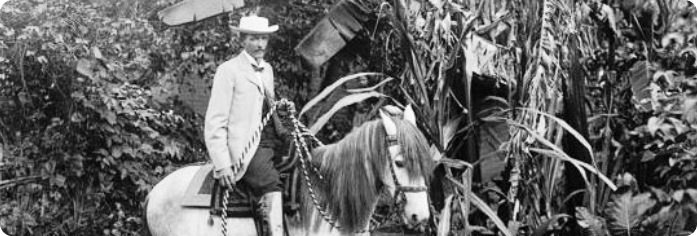The Tragic Fate of Alfonso Burlat Apdujan
February 7, 2020

In the 1800’s, under the Spanish colonial government, Misamis Province
covered an area composed of what is today’s Misamis Oriental, Misamis Occidental, Camiguin,
Bukidnon, Lanao, Zamboanga del Norte and the northern part of Cotabato. The capital of
Misamis was the town of Cagayan de Misamis, the present-day Cagayan de Oro.
After Spain’s loss in the Spanish-American War of 1898, the Philippines
was ceded to the United States, thus ending more than 300 years of Spanish rule. The
Americans immediately established their own colonial government in 1901. Some of the
features of the Spanish system in the local government structure were preserved, notably the
position of mayor or town president (El Presidente, as he was called).
 The province of Misamis under the Spanish colonial government in the 1800's.
The boundaries were maintained when the Americans took over in 1901.
The province of Misamis under the Spanish colonial government in the 1800's.
The boundaries were maintained when the Americans took over in 1901.
One of the bigger towns of Misamis was Langaran, renamed Plaridel in 1907.
The town president of Plaridel in 1913 was one Alfonso Burlat Apdujan. Who was he?
Here’s an excerpt from Resolution No. 22-2012 of the Sangguniang Bayan of
Plaridel, Misamis Occidental dated February 27, 2012:
"WHEREAS, ALFONSO BURLAT APDUJAN
was a settler in Barrio Panalsalan, Plaridel in the late 1800’s and became a very successful
businessman doing barter trade with local citizens. He was so successful that he gained the respect
and love of the townspeople that made his way to politics who then elected him as "El Presidente".
As such, he goes to Cagayan de Oro regularly to report on the status and life in general of his
constituents in Plaridel. He was coming home on horseback from official business in Cagayan de Oro
where he met his untimely death that fateful day of February 22, 1913 on Lobog Bridge of Panalsalan,
Plaridel, Misamis Occidental;"
How did he die? The story was that a plank of the wooden Lobog Bridge gave way
causing the horse and rider to plunge into the murky water below. The bridge was over the Lobog
River, maybe so named as "lobog" means murky in the dialect. The horse survived the fall
and went back to his owner’s house. Family and friends were concerned when they saw the horse ambling
home without Alfonso. They retraced the horse’s route and their worst fears were confirmed when they
saw the lifeless body of Alfonso lodged in the wooden truss under the bridge.
That would have been the end of Alfonso’s life story, but his descendants wanted
him remembered. For didn’t he die in line of official duty? Doesn’t he deserve some sort of a memorial?
Through the years, Lobog Bridge has evolved from a narrow wooden bridge to a
one-lane Bailey bridge to a two-lane concrete bridge and an additional two-lane concrete bridge.
 A representation of the evolution of the Lobog Bridge.
A representation of the evolution of the Lobog Bridge.
Naming the bridge Alfonso Burlat Apdujan Bridge would be a fitting tribute to the
man’s service to his people. This was the thrust of the Apdujan family for a number of years, but it
was only in 2012 when this was officially acted upon.
Resolution No. 22-2012 acknowledges this, thus:
"WHEREAS, Ms. Minihaha Ratilla, on
behalf of the Apdujan family, personally conveyed to the Sangguniang Bayan members her family’s
intention to rename Lobog Bridge after her great grandfather, ALFONSO BURLAT APDUJAN, who met his
untimely death while in the performance of duty as "El Presidente", known as "Mayor"
today;"
"WHEREAS, the Sangguniang Bayan members
finds it appropriate that his sacrifice and genuine dedication of service be memorialized and
honored by renaming Lobog Bridge after his name and be called Alfonso Burlat Apdujan Memorial Bridge;"
"WHEREAS, this proposed change of name
purports to introduce the historical value of the bridge and shall serve as an important educational tool
for the generations to come for them to remember a local hero who lost his life for the townspeople of
Plaridel;"
The resolution was endorsed to the Sangguniang Panlalawigan of Misamis Occidental for
approval and was favorably acted upon, through its Resolution No. 347-12:
"Be it RESOLVED, by the Sangguniang Panlalawigan
of Misamis Occidental to APPROVE, as it hereby
APPROVES, the Resolution No. 22-2012 of the Sangguniang Bayan of Plaridel "A Resolution Strongly Endorsing
to the Sangguniang Panlalawigan of Misamis Occidental, for the Renaming of LOBOG BRIDGE as Alfonso Burlat Apdujan
Memorial Bridge;"
"RESOLVED FURTHER, that copies of this Resolution
be furnished to the Honorable Provincial Governor Herminia M. Ramiro, for appropriate action; the Local Chief
Executive and Sanggunian of the LGU of Plaridel, for information and guidance."
"ADOPTED, this 1st day of October, 2012 at Oroquieta
City,"
This was eight years ago. Today, it’s almost one hundred seven years after Alfonso’s death. What happens
next? Will he ever get his memorial?
A poet once wrote, "Our dead are never dead to us until we have
forgotten them." Tragic was Alfonso Burlat Apdujan’s death. More tragic it would be if he is forgotten.
 A typical horseman in the early 1900's.
A typical horseman in the early 1900's.
Alfonso Burlat Apdujan and Geronima Serrano's children and their spouses:
|
Children |
Spouses |
| Isabel |
Gregorio Lagura |
| Clemente |
Epifania Rillas |
| Juana |
Celestino de los Santos |
| Rufo |
Valeriana Caguindangan |
| Panfilo |
Paula Adavan |
| Exequiela |
Julio Banguis |
| Librada |
Conrado Villanueva |
| Roberto |
Teofista Bergado |
 Minnehaha Ratilla is a granddaughter of Panfilo Apdujan
Minnehaha Ratilla is a granddaughter of Panfilo Apdujan
and great granddaughter of Alfonso Burlat Apdujan.
Postscript:

Congressman Diego "Nonoy" Ty, filed House Bill No. 8148,
"AN ACT RENAMING THE LOBOG BRIDGE IN THE MUNICIPALITY OF PLARIDEL,
PROVINCE OF MISAMIS OCCIDENTAL AS ALFONSO BURLAT APDUJAN BRIDGE".
The bill was approved in the House of Representatives and is now pending
in the Senate.
Hopefully, this will become a law before the congressional recess in June, 2021.






